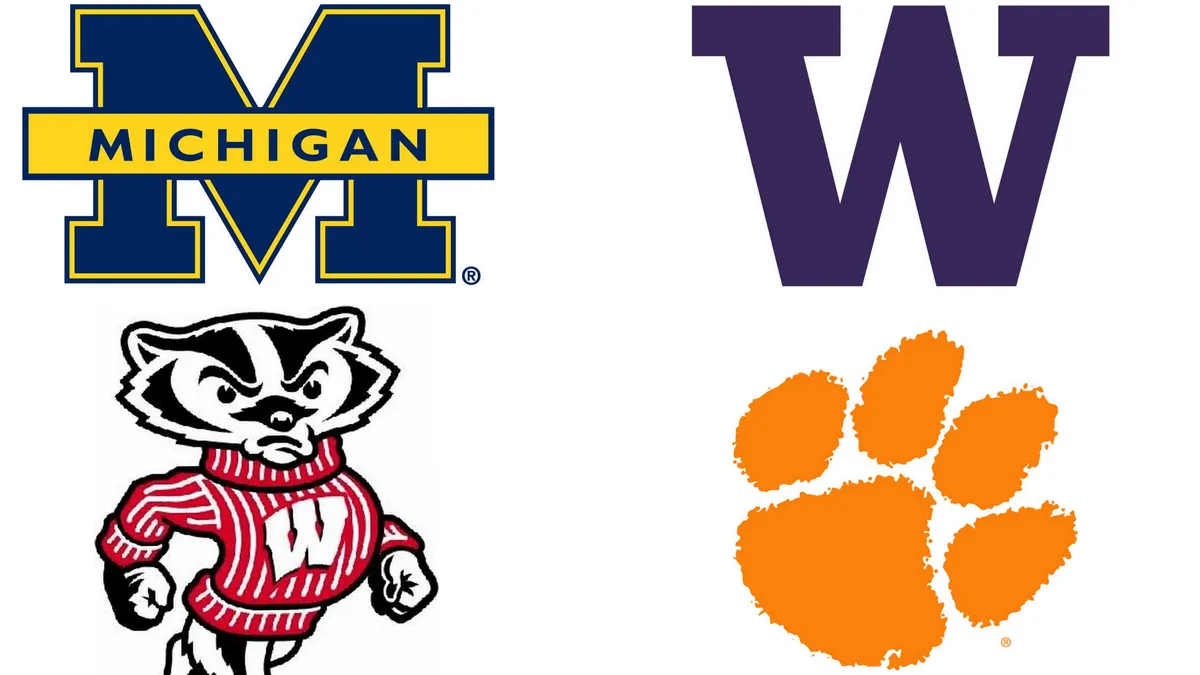The Clemson Tigers beat the Alabama Crimson Tide with a final score of 35-31 Monday night, avenging a loss to the Tide in last year's College Football Playoff Championship game.
But while the college football top ten represents the nation’s best in gridiron success, several of these schools are also among the nation’s best in research, access for low-income and minority students and postgraduate outcomes.
With the nation shifting its emphasis to defining college value through these metrics, we decided to take at look at the nation’s best football schools, as ranked by standards outlined by the U.S. Department of Education’s federal scorecard, and each team's Academic Progress Rate (APR) — the metric which tracks student-athletes' chance of graduating college. By looking at the scorecard’s most prominent metrics (cost of attendance, graduation rate and salary after graduation), and each team's APR, Education Dive came up with our own final poll ranking of the top BCS schools based on their positions in the average of the three metrics polls.
Here's where they rank:
Cost of attendance
Affordability has been perhaps the biggest buzzword in higher education over the last few years, and cost of attendance is increasingly under scrutiny as the public pushes the idea of higher education as a universal right.
Here is where the CFP top-10 schools rank on average annual cost, as reported in the College Scorecard:
-
Washington - $13,566
-
Michigan - $15,787
-
Clemson - $16,306
-
Oklahoma - $16,533
-
Ohio State $18,068
-
Wisconsin - $18,397
-
Alabama - $20,787
-
Colorado - $21,792
-
Penn State - $28,201
-
USC - $28,344
Graduation rates
Perhaps the most important metric in higher education is an institution's completion rate. There remains a lot of controversy about how the federal government tracks this data — for instance, schools which accept a lot of transfers, either from community colleges or other four-year institutions are penalized under the current calculation, which only considers the four- and six-year graduation rates of first-time enrollees. Similarly, institutions whose student population is heavily low-income may see more students needing to work full-time while taking classes, which may prolong graduation, and those students are not counted towards an institution's success rate either.
However, despite discrepancies in data and the way it is calculated, graduation rates remain an important indicator of institutional effectiveness. Here's how the top-ten college football teams of the 2016-2017 season stack up on graduation rates:
-
USC - 91%
-
Michigan - 90%
-
Penn State - 86%
-
Ohio State - 83%
-
Washington - 83%
-
Wisconsin - 83%
-
Clemson - 82%
-
Colorado - 70%
-
Oklahoma - 67%
-
Alabama - 66%
Post-graduation salary
Another popular measure of ROI in higher education is the salary of an institution's graduates. As the federal government and accrediting agencies increasingly look to tie post-graduation outcomes around employment and salary data to institutional funding and and accreditation, this metric will become increasingly more important.
Here's where the schools stand on post-graduation salaries:
-
USC - $67,700
-
Michigan - $57,400
-
Washington - $53,700
-
Wisconsin - $51,600
-
Clemson - $50,800
-
Colorado - $47,700
-
Penn State - $47,700
-
Oklahoma - $46,700
-
Ohio State - $42,900
-
Alabama - $41,900
APR rates
While overall graduation rates are important, measuring the academic progress rates of the guys who are actually playing on the field in bowl games and throughout the playoffs is perhaps the most important factor in gauging the academic success of the football teams. APR was introduced in 2003 as part of what the NCAA hoped would be sweeping reforms around the academic portion of college sports. It measures the retention and eligibility rate of athletes on a given team, thus serving to predict the all-important graduation rate on each team. Of course, what cannot be accounted for, especially on teams playing at the level of competition and with the level of attention and fanfare that accompanies teams at this level of play, is the number of students who will leave early to declare for the draft.
Thus this metric, like each of the others, is an imperfect, though certainly important, one. Here's where each of the top-ten teams ranks on APR through the 2014-2015 school year — the most recent year for which data is available:
-
Wisconsin - 992
-
Michigan - 989
-
Clemson - 983
-
Alabama - 979
-
Washington - 974
-
Ohio State - 971
-
Colorado - 968
-
Penn State - 960
-
USC - 959
-
Oklahoma - 955








